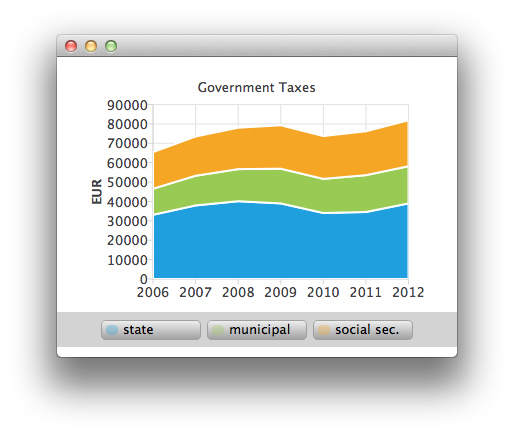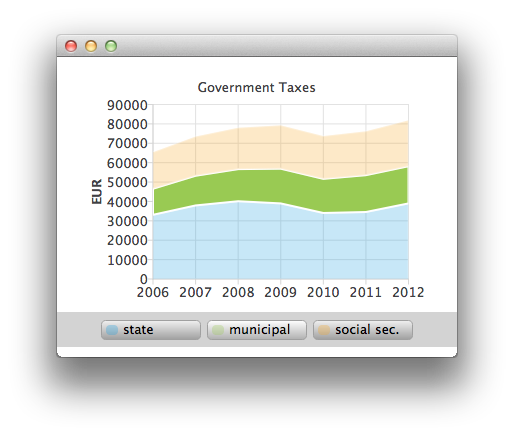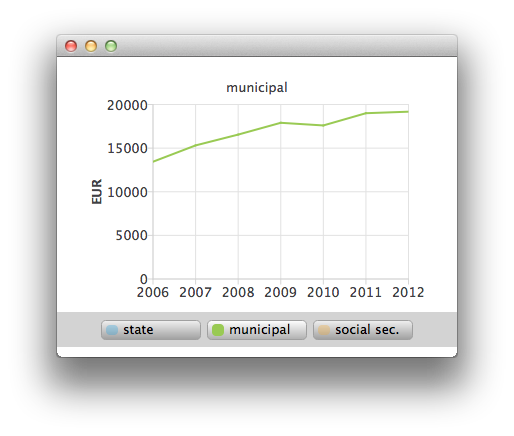自定义图例
注意: 这是《带有 QML 画廊的图表》示例的一部分。
在这里,我们向您展示如何创建自己的自定义图例,而不是使用 ChartView API 的内置图例。
应用程序的主要视图显示一个堆叠区域图。这是创建其中一个堆叠区域的方式。参见 ChartViewStacked.qml 和 AnimatedAreaSeries.qml。

AnimatedAreaSeries { id: municipalSeries name: "municipal" axisX: axisX axisY: axisY borderWidth: 0 upperSeries: LineSeries { id: municipalUpper XYPoint { x: 2006; y: 33119 + 13443 } XYPoint { x: 2007; y: 37941 + 15311 } XYPoint { x: 2008; y: 40122 + 16552 } XYPoint { x: 2009; y: 38991 + 17904 } XYPoint { x: 2010; y: 34055 + 17599 } XYPoint { x: 2011; y: 34555 + 19002 } XYPoint { x: 2012; y: 38991 + 19177 } } lowerSeries: stateUpper }
将鼠标悬停在图例上方可突出显示悬停的序列。(参见 CustomLegend.qml)。

Row { id: legendRow anchors.centerIn: parent spacing: 10 Repeater { id: legendRepeater model: legend.seriesCount delegate: legendDelegate } } Component { id: legendDelegate Rectangle { id: rect ... MouseArea { id: mouseArea anchors.fill: parent hoverEnabled: true onEntered: { rect.gradient = buttonGradientHovered; legend.entered(label.text); } onExited: { rect.gradient = buttonGradient; legend.exited(label.text); marker.opacity = 0.3; marker.height = 10; } onClicked: { legend.selected(label.text); marker.opacity = 1.0; marker.height = 12; } }
您还可以通过鼠标点击选择其中一个堆叠区域,以更详细地查看作为线序列的堆叠区域(参见 ChartViewHighlighted.qml)。

ChartView { id: chartViewHighlighted property variant selectedSeries signal clicked legend.visible: false margins.top: 10 margins.bottom: 0 antialiasing: true LineSeries { id: lineSeries axisX: ValueAxis { min: 2006 max: 2012 labelFormat: "%.0f" tickCount: 7 } axisY: ValueAxis { id: axisY titleText: "EUR" min: 0 max: 40000 labelFormat: "%.0f" tickCount: 5 } }
© 2024 The Qt Company Ltd。本文档中的贡献包括各自所有者的版权。本提供的文档根据自由软件基金会发布的 GNU 自由文档许可协议版本 1.3 许可。Qt 及其相应标志为芬兰的 The Qt Company Ltd. 及/或世界其他国家的商标。所有其他商标属于其各自所有者。
